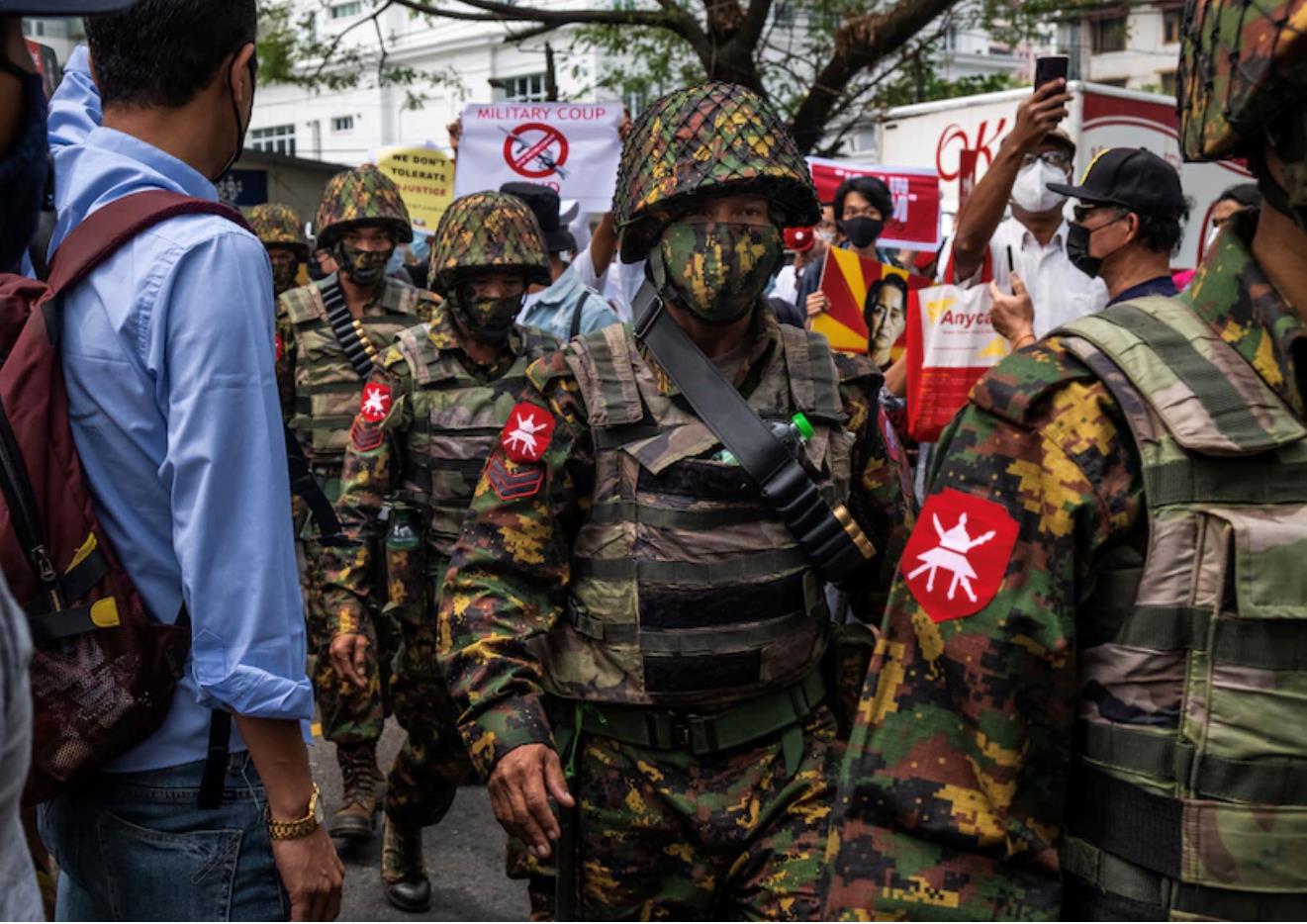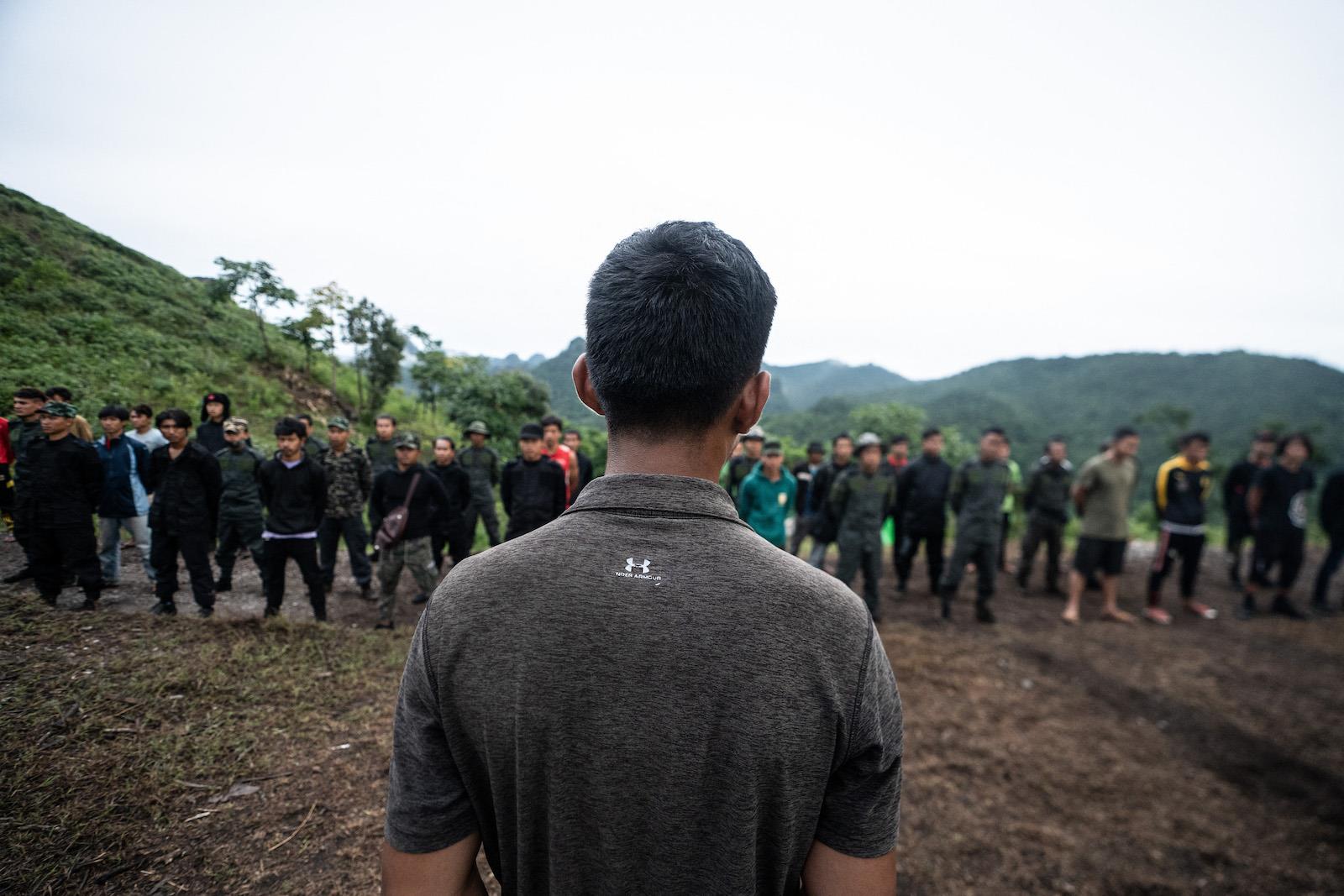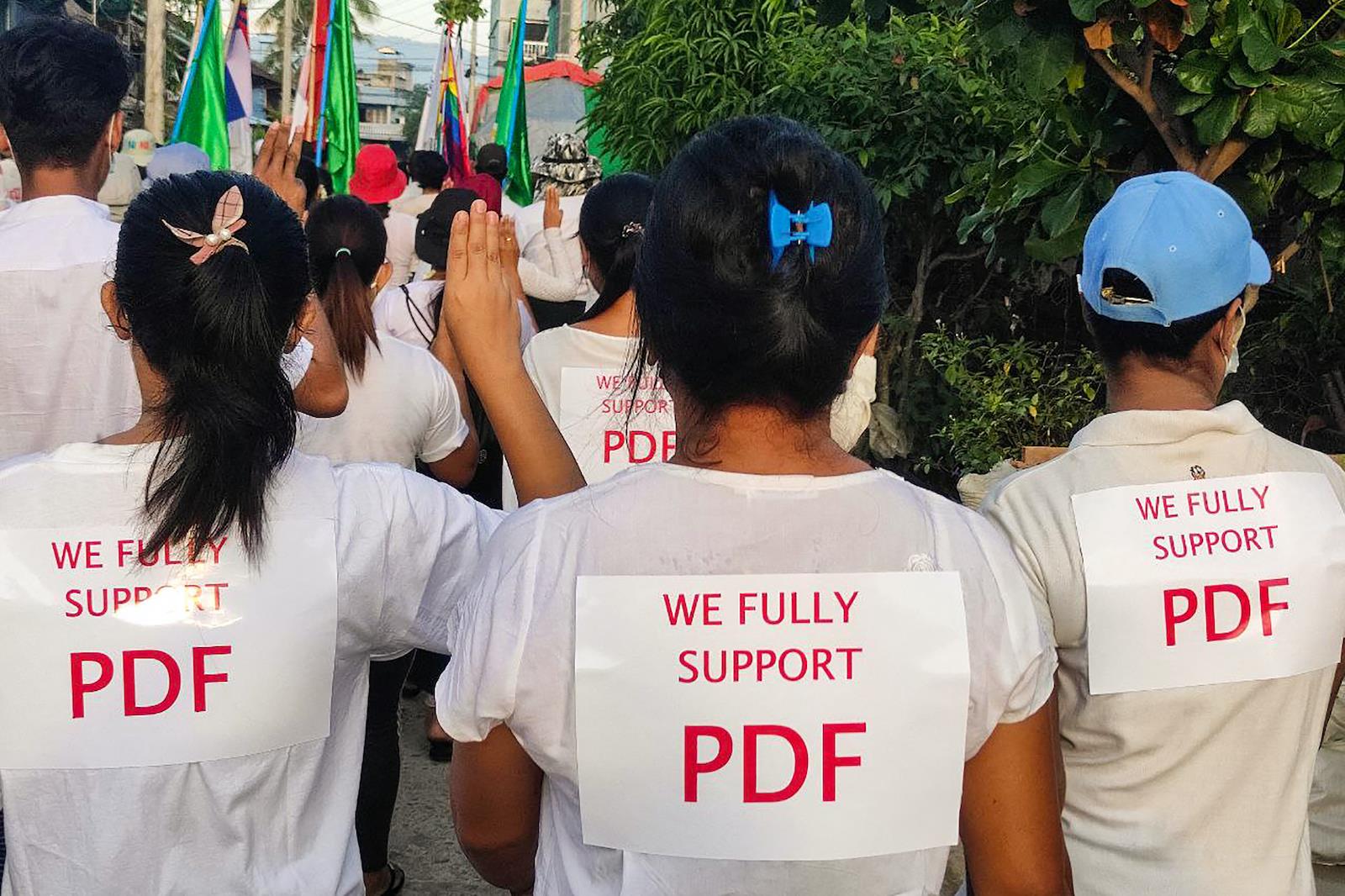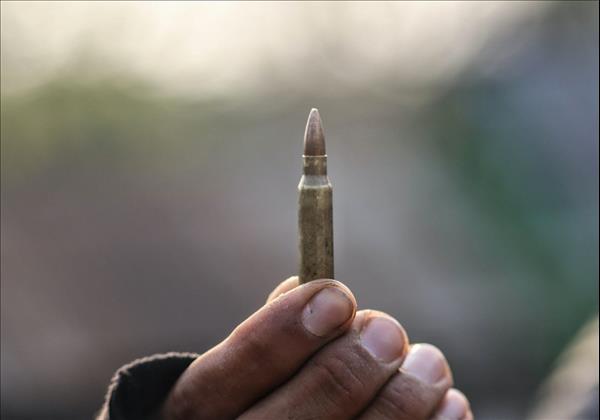
Fog of stats enshrouds Myanmar's wars
Myanmar's multiple internecine conflicts are raging, with few if any signs of respite or resolution. Quantifying“old” and“new” dimensions of the conflict with the recent proliferation of new, anti-coup People's Defense Forces (PDFs) alongside long-fighting ethnic armed organizations (EAOs) is difficult, if not impossible, with any degree of accuracy.
But that isn't deterring some dubious manipulators of data. The March publication of the Annual Peace and Security Review 2020-2021 of the Myanmar Institute for Peace and Security (MIPS) is worth scrutinizing for its reliability in informing the public of post-coup dynamics and realities.
MIPS was formed several years ago as a“non-governmental, non-partisan 'think-and-do-tank' providing principal stakeholders with the insight needed to navigate the challenges of the ongoing peace and security transition.” Overviewing the MIPS' work should weigh two broad criteria, namely the outfit's methodology and presentation of data, and its political motivations.
The report breaks down conflict trends from all of 2020, and only up to July 31, 2021, for major EAOs in Rakhine, Kachin, Kayin, and northern Shan states. But nowhere in the table of contents is the Myanmar military even mentioned, which is odd because every armed group in the country seems to be fighting the central army.
MIPS is obsessed with precise incidents and gauging escalation or de-escalation of conflict, often with little causality. Inter-EAO fighting is also covered, although its complexities are given only cursory treatment.
In 2020, MIPS claimed 832 armed clashes and 183 mine or improvised explosive device (IED) attacks. Following the coup in February 2021 and the formation of the State Administration Council (SAC) military junta, from January to the end of July there were 1,021 clashes and 652 IED incidents, marking a supposed“866% increase in IED incidents.”
Conflict statistics for only the first seven months of 2021 provide a distorted image of the violence, when the spreading conflict between multiple new PDFs and established EAOs erupted in Sagaing, Magwe Kayah and Kachin mostly after the circumscribed period. Disruptions to MIPS monitoring systems are the ostensible reason for the abbreviated reporting.
There is nothing new or novel about the data, maps and HEAT maps, as it all appears much later than other monitoring efforts. The sections on the post-coup protests, the rise of PDFs and the fusing of PDF and EAO efforts have been exhaustively reported, as have the increased ferocity of the military offensive and widespread use of arson to destroy villages, all crucial information MIPS fails to address or include.
The report also records the number of people allegedly killed by resistance forces, including officials, informers (dalan) and members of the pro-military political party.

Myanmar soldiers on the march amid an anti-coup protest. Image: Getty via AFP / Hkun Lat
“According to an internal document received by MIPS from the Union Solidarity and Development Party (USDP)…722 USDP 'members and supporters' were targeted and killed between February and November 2021 (part Chairman U Than Htay recently unveiled a monument to 1,300 party members killed since the coup),” the report says.
It also cites SAC figures on suspected extrajudicial killings as 933 from February to August 2021.
There is an unconvincing casuistry to its conflict analysis, a clumsy attempt at moral equivalency that obscures the rampant slaughter of unarmed civilians by security forces since the coup – far greater in all likelihood than commonly used figures collated by the Assistance Association for Political Prisoners (AAPPB), an independent monitoring group.
MIPS claims to have a sophisticated information gathering methodology, which it refers to as a“Township-based Conflict Monitoring System (TCMS), an advanced data collection system and database that tracks and stores more than 300 variables related to peace and conflict in Myanmar,” with 75 of these“variables” indicating acceleration or deceleration of a conflict.
This pseudo-academic jargon is designed to bamboozle the gullible. The real source of all these figures in buried in one paragraph that states:“Information is collected primarily from open sources, including traditional media and social media.” In other words, it is media monitoring and numbers collation, infused with some military jargon and an air of certainty.
This is the often-overlooked reality of much conflict analysis in Myanmar, from think tanks to academics and the growing number of mercenary“context and atmospherics” entrepreneurs that churn out internal reporting to Western donors, or the security and conflict data firms such as EXERA or ACLED that are more easily accessible but who, too, are essentially ripping off Myanmar journalists and not exactly coming clean on the evident bias, gaps and potential exaggerations that affects all media reporting on conflict around the world.
This would ideally warrant international donors to increase funding to Myanmar media in multiple languages and locations, starting with Burma News International (BNI) which continues to produce important insights throughout Myanmar (although exercise caution with Khit Thit Media).
Embassies and international organizations are now awash in analytical products, much of it reliant on local reporting, which is often pilfered for clashes and casualty figures then laundered through a database that information entrepreneurs can claim as their own.
Perusing such reporting like the European Union-funded Conflict Analysis and Research (CAR) Facility's weekly is evidence of the poor state of much of the analysis on Myanmar's conflict and an indictment of the vast sums of money squandered on such products.
The MIPS model made this possible, despite its questionable political leanings towards the Myanmar military. The subtle pro-military bias to its documentation was unsettling from the start, but is all the more alarming and disturbing in a post-coup setting.
The MIPS bias is selective. There is no adulation of the military, or justification for its actions, and there is just enough, a modicum, of criticism of the army to satisfy a measure of impartiality. More problematic is the persistent, almost systematic, criticism of EAOs as instigators, stonewallers or spoilers, which ultimately aims to redirect responsibility away from the military.

This photo taken on July 7, 2021, shows members of the Karenni People's Defense Force (KPDF) taking part in military training at their camp near Demoso in Kayah state. Photo: AFP / Stringer
Its director, Min Zaw Oo, has been a controversial figure for the past ten years, charming foreign donors with his American education, experience in mapping“Human Terrain Systems” in Afghanistan, and working at the Myanmar Peace Center and the post-Nationwide Ceasefire Agreement (NCA) Joint Monitoring Committee (JMC).
Yet he was always viewed with suspicion by many Myanmar people involved in the peace process, as were so many of the MPC people such as Aung Naing Oo, Tin Maung Than and others for their perceived subtle pro-military bias, mostly because of their close association with former President Thein Sein.
In short, Min Zaw Oo is skilled in telling diplomats what they want to hear. He now remains in Yangon when so many thousands of Myanmar technocrats and activists had to flee or face arrest. It raises questions about what accommodation he may have made with the SAC.
Not so subtle is the track record of the former senior MIPS deputy director Dr Salai Ngun Cung Lian (or Salai Andrew, a US citizen), who was appointed as an advisor to the SAC soon after the coup, compelling MIPS to release a statement that he had formally resigned and had no official position at the outfit.
Andrew joined SAC Foreign Minister Wunna Maung Lwin at a diplomatic briefing on February 8, with state media reporting,“Dr Salai Ngun Cung Lian joined the briefing by explaining the SAC's assumption of the State responsibilities is in accord with the provisions of the State Constitution 2008.”
Even before the formation of MIPS, Salai Andrew, as the MPC's“legal director” was prone to pro-military sentiments, telling the Canadian Press in 2013 that there were no atrocities being perpetrated by the military in Kachin state.“(Canada's) government, plus the American government, plus the United Nations – everyone is misinformed,” he reportedly said.
One of MIPS' major donors is the Canadian International Development Research Center (IDRC) – their logo appears on the front page of the annual report – an otherwise well-regarded donor that supported some very progressive initiatives in Myanmar. A review of the IDRC's funding in 2019 noted that“IDRC clarifies that MIPS also engages the military regularly.”
But then it erroneously stated that“(t)he head of MIPS used to lead the Myanmar Peace Centre set up by Daw Aung San Suu Kyi.” He was one of several leaders of the MPC, which was formed under former president Thein Sein, not Suu Kyi. She perceived the outfit with great suspicion and later folded the MPC to form the Myanmar Center for Peace and Reconciliation.
That Canada, with its purported“Feminist International Assistance Policy”, should be a primary donor through its International Development Research Center (IDRC) to a data collection think tank with evident pro-military bias toward an army with a horrendous record of sexual violence and rape in conflict, alongside many other atrocities, is a stain on its developmental support.
That policy approach claims to support greater inclusion of women in peace processes, a notable failure in the past ten years in Myanmar, glaringly seen by the dearth of senior positions for women in such mansplaining outfits as MIPS and the MPC.

This handout photo taken and released by Dawei Watch on May 10, 2021, shows protesters wearing signs in support of a People's Defence Force (PDF) during a demonstration against the military coup in Dawei. Photo: Handout / Dawei Watch / AFP
Other MIPS donors should question their past and any future financial contributions, and actually inquire how much it may have supported the military to actively disrupt the peace process and potentially cover up atrocity crimes before the coup.
The MIPS' annual review helpfully names these donors: the World Bank, Asia Foundation, Australia's Department of Foreign Affairs and Trade (DFAT), Sweden's Uppsala University, and Norwegian aid through the Peace Research Institute of Oslo (PRIO).
Support for MIPS is designed to satisfy foreigners' need to push an unconvincing agenda, and donors apparently don't mind being duped by such obvious gaslighting as long as it looks glossy. But it is highly unlikely MIPS' leaky reporting and fealty to the military would survive long in a post-coup Myanmar where facts are given precedence over spin.
David Scott Mathieson is an independent analyst working on conflict and human rights issues on Myanmar.

Legal Disclaimer:
MENAFN provides the
information “as is” without warranty of any kind. We do not accept
any responsibility or liability for the accuracy, content, images,
videos, licenses, completeness, legality, or reliability of the information
contained in this article. If you have any complaints or copyright
issues related to this article, kindly contact the provider above.

















Comments
No comment